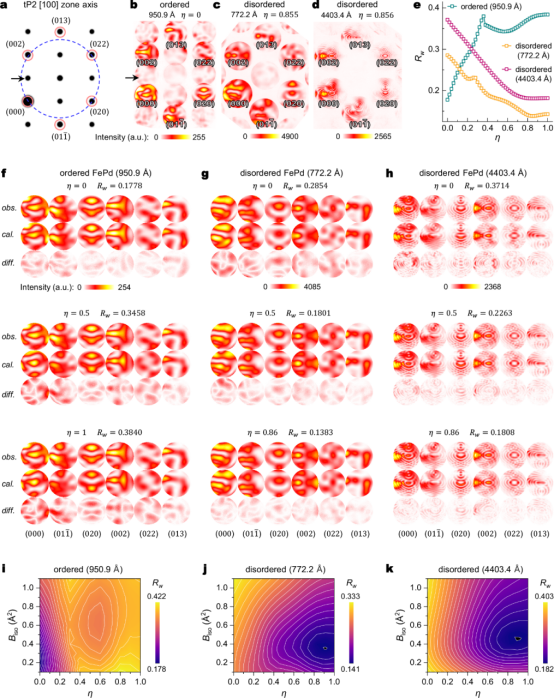
Recently, the team led by Academician Fu Zhengyi from the State Key Laboratory of Advanced Technology for Materials Synthesis and Processing, together with Researcher Sang Xiahan from the Center for Nanoscale Structure Research of Wuhan University of Technology (WUT), has made important advances in the field of quantitative convergent beam electron diffraction (QCBED). Their research, titled “Revealing disorder parameter and deformation electron density using electron diffraction”, was published in Nature Communications, a high-profile journal under the Nature portfolio. The State Key Laboratory of Advanced Technology for Materials Synthesis and Processing is listed as the first corresponding affiliation, and Researcher Sang Xiahan is the sole corresponding author. Lin Weixiao, a direct PhD student from the School of Materials Science and Engineering (School of Microelectronics), and Xue Zefan, a first-year PhD student in Nanoscience and Engineering, are co-first authors.
In this study, the research team creatively combined the multi-beam off-zone-axis (MBOZA) QCBED method with the coherent potential approximation (CPA) under the Bloch-wave framework. This enabled the precise and simultaneous quantification—at the nanoscale—of the disorder degree, Debye-Waller factors, and bonding electron density in both chemically ordered L1₀-FePd and chemically disordered γ-FePd alloys. Density functional theory (DFT) calculations based on supercell models with random atomic distributions not only validated these results but also revealed the dynamic charge transfer behavior between Fe and Pd atoms, depending on the local chemical environment.
This research provides strong evidence for the applicability and accuracy of QCBED in the quantitative characterization of disordered material systems. It addresses a critical gap in the fine-scale structural analysis of disordered materials and provides a powerful new tool for deepening the understanding of structure–property relationships and performance tuning in such systems.
The group led by Researcher Sang Xiahan focuses on developing and applying advanced electron microscopy techniques to study chemical bonding, atomic/electronic structures, and the underlying structure–function relationships in inorganic functional materials. The team has achieved a series of innovative results in areas such as quantitative electron diffraction, high-precision real-space measurements, and in-situ quantitative electron microscopy. One of their recent works, “Direct observation of cation diffusion driven surface reconstruction at van der Waals gaps”, was also published in Nature Communications in 2023 (14, 554). This research has been supported by the National Natural Science Foundation of China.

Figure 1. Measuring disorder (η) in ordered vs. disordered FePd via MBOZA-CBED.
Paper link: https://doi.org/10.1038/s41467-025-60966-0
Written by: Sang Xiahan
Rewritten by: Lu Yu
Edited by: Liang Muwei, Li Tiantian
Source: Institute of New Materials (State Key Laboratory of Advanced Technology for Materials Synthesis and Processing)
|
|